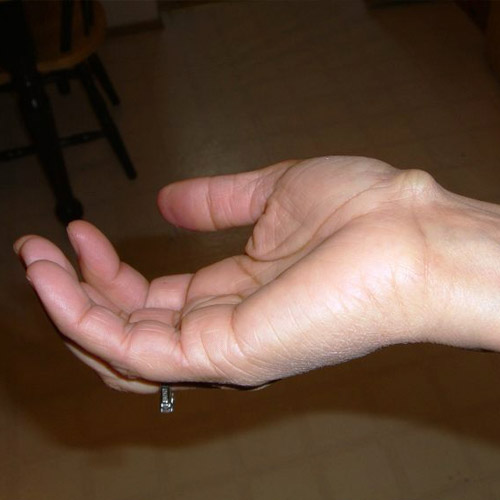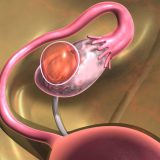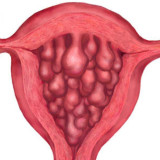
Hygroma of hand – the phenomenon is extremely unpleasant. After all, such education is not only an aesthetic drawback, but also significantly reduces the quality of life of the patient. And today, many people are interested in questions about the causes, symptoms and treatments of this disease.
What is the hygroma?
In fact, hygroma of hand is a cyst – a benign formation. Interestingly, these structures in most cases have a regular rounded shape and rather resilient to the touch. Inside the cyst – serous fluid content, and sometimes a small amount of mucus and fibrin protein.
Dimensions hygroma of hand may also be different – it all depends on the stage of its development. In most cases, the diameter of such a formation is 1-5 centimeters.
Where there hygroma?
In most cases, such a tumor occurs in the wrist joint. It should be noted that in this hygroma of hand can be both very compact and relatively soft to the touch.
Much less cyst occurs on the surface of the palm. It can be located in the center or slightly displaced towards the base of the thumb. Hygroma occasionally occur on the back of the fingers, namely in the area of the knuckle or distal phalanx. The most common cyst is a solitary, but some patients may notice the appearance of several small tumors.
The main cause of hydra of hygroma of hand
Of course, many patients are interested in questions about why hygroma is formed on the hand. In fact, doctors are not always possible to establish the exact cause of the tumors. However, the major risk factors are known to modern medicine.
- First of all, the list of reasons is necessary to specify a genetic predisposition to this type of disease – some people have a weakness osteoarticular apparatus is innate.
- On the other hand, in most cases hygroma of hand appears as a result of injury, for example, stretching or improperly fused after fracture.
- Risk factors include a variety of degenerative joint disease.
- Inflammation of the joints or soft tissues in the wrist may also provoke the emergence and growth hygroma.
- In addition, these tumors can appear in the case of constantly committed the same type of motion of the wrist. For example, often suffer from hygromas musicians, seamstresses, office workers, athletes (tennis).
Hygroma of hand: symptoms
Immediately it is worth noting that in most cases such a disease occurs without any visible symptoms. Moreover, the cyst can grow in size very slowly (sometimes even years) and can appear and grow to an impressive size in just a few weeks.
Detect large cyst is not difficult – it looks like a small tumor. Sometimes it is accompanied by pressure on the acute pain. As the cysts decreased quality of life. Even if a tumor does not cause pain, it interferes with the normal movement of the joint – patients have difficulty trying to embrace something with your fingers or flex his hand at the wrist.
Sometimes the skin of the new formation of red and starts to peel off. It is also noted that the tumor can grow in size during heavy physical exertion, due to the swelling of the soft tissues. Sometimes growing cyst starts to press on nearby blood vessels and nerve endings. This often leads to a sharp increase in skin sensitivity or, on the contrary, numbness.
In any case, a growing hygroma brush – it is an occasion for a visit to the doctor. Even if the abnormality occurs without physical discomfort, it often affects the emotional state of the patient.
Modern methods of diagnosis
If you have on hand there was a small bump, you should seek medical advice. Usually, the diagnosis of this disease is not fraught with difficulties – hygroma may suspect the presence of even a therapist. After all, in this case, the symptoms are very characteristic. But later still should consult a podiatrist or surgeon.
Only a specialist can prescribe effective treatments, as therapy in this case depends on the size and degree of hygroma accompanying discomfort. However, for the beginning it is still desirable to conduct additional tests. For example, X-ray examination will help determine the presence of abscesses or other cysts, which can be hidden under the soft tissue. In some cases, patients are also administered ultrasound and MRI. All of these procedures are intended to determine the causes of hygroma.
Complications
In fact hygroma of hand in most cases do not present any particular risk. It is a benign tumor, and the risk of malignant transformation is not it. Complications in this case are also considered exceptional. For example, sometimes patients develop purulent tenosynovitis.
However, your physician is best to consult. The fact is that with proper treatment in the early stages of the cyst can be pretty quick to get rid of without the help of a surgeon.
Hygroma of hand: treatment by conservative methods
In no case do not try to self-medicate to consultation with a specialist. Only your doctor knows which treatment requires hygroma brush. Treatment depends on the size and location of tumors, as well as on its causes.
For example, if you have a tumor of small size for some special treatment, and it may be not necessary. In some patients the cyst resolves itself when to restrict physical activity.
In addition, there are other methods of treatment. At the time, it was quite popular crushing hygroma. The procedure is performed under local anesthesia – the doctor presses on the tumor with the help of a flat object as long as it does not burst. Synovial fluid contained within hygroma of hand – a sterile, so crushing rarely accompanied with some complications. Nevertheless, the probability of the inflammatory process still exists. In addition, a high risk of relapse.
Today is considered to be a more effective treatment of hygroma using glucocorticoids. This procedure is performed under local anesthesia. Using a special needle doctor punctures the skin, soft tissue and the wall of the tumor, and then deletes the content. Further, the cyst is introduced hormonal drug. On the arm is applied a pressure bandage, which must be worn with the orthosis. As a rule, it is removed after 5-6 weeks. During this time, hygroma of hand walls fused together, so the chance of recurrence is extremely low.
Unfortunately, the above methods are only effective for treatment of small lesions, whose diameter is less than 1 centimeter.
Surgery
Surgical removal hygroma brush held in those cases, if the patient asked for help in the later stages of the disease (tumor is larger) or the tumor has a chamber structure.
How do I delete hygroma of hand? The operation is performed under local anesthesia. First, the surgeon makes a small incision in the skin, and then separates from the surrounding tissue cysts and ablates it. Rehabilitation also in this case lasts for about five weeks. After two weeks, remove the stitches. The patient is still some time should use the brace.
Today, it is becoming increasingly popular operations with laser equipment. Laser therapy reduces the duration of the rehabilitation period, and also minimizes the chance of wound infection, inflammation and subsequent suppuration.
Is it possible to get rid of hygroma using traditional medicine?
Of course, the treatment of hygroma of hand folk remedies possible – there are many recipes that recommend healers. For example, it is an effective regular cabbage. Fresh cabbage leaf, smear honey and applied to the brush, fixing on top of the bandage and wrapped a towel. The procedure is best done at night. In addition, patients are recommended twice a day to drink half a cup of juice of cabbage.
To relieve hygroma of hand symptoms compresses of tea fungus are also used. It is considered to be a useful and a decoction of hay dust. At first hand it must hover then treated skin with Vaseline.
Of course, these recipes a lot. And in some cases they really help get rid of a small tumor. However, before you start self-treatment, it is necessary to consult a doctor.









